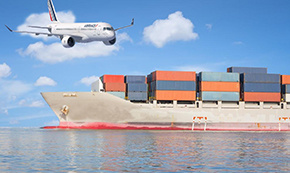All categories >
Big news! U.S. Senate: End Trump’s Comprehensive Tariff Policy!
Categories:
News Center
News
Time of issue:
2025-10-31 17:53
Views:
This Senate action is not isolated: Earlier this week, the Senate already took the lead by passing two separate resolutions that explicitly canceled additional tariffs on Canada and Brazil. This latest vote, however, broadens the scope to include "global, comprehensive tariffs," while simultaneously approving the termination of the "national emergency" status established specifically to justify these tariffs. Notably, within the opposition camp, five Republican lawmakers have already "defected," siding with those calling for an end to the tariffs—a sign that divisions over U.S. tariff policies are growing across the country.

Sino-U.S. Trade, Tariffs
Why has tariff policy "fallen out of favor"? Goldman Sachs already exposed the truth.
The comprehensive tariff policy introduced during the Trump era was once hailed as a powerful tool to "protect American industries while making trading partners foot the bill"—yet years of implementation have fully exposed its drawbacks.
Goldman Sachs' previously released report has long highlighted the core contradiction: U.S. consumers and businesses are, in fact, the true bearers of tariff costs. Take the tariffs imposed on China as an example—any additional taxes ultimately either translate into higher costs for importers or are passed on to American consumers through price hikes, thereby intensifying inflationary pressures. Meanwhile, these tariffs have also triggered retaliatory measures from trading partners, with U.S. agricultural and energy export industries bearing the brunt. Farmers in several states have repeatedly protested against the policy's devastating impact on their livelihoods.
More critically, tariff barriers have severely hampered the global competitiveness of U.S. businesses. Many manufacturing companies that rely on imported raw materials have been forced to scale back production due to soaring costs, while exporters have lost market share as their overseas counterparts retaliated. This "kill the enemy but harm oneself" outcome has become a key driver behind the Senate's push to end the policy.
Cool down before cheering: The bill still has to clear "two major hurdles" before it takes effect.
Although the Senate vote sent a positive signal, it doesn’t mean that the tariff policy is about to "meet its end." From a legislative perspective, the bill still faces two major, insurmountable hurdles:
The First Hurdle: A "Cold Shoulder" from the House of Representatives
According to the U.S. legislative process, resolutions passed by the Senate must be submitted to the House of Representatives for a vote. However, House Republicans have repeatedly and publicly blocked legislative efforts to overturn the tariffs. In fact, some U.S. media outlets have revealed that House leadership has explicitly refused to hold a vote on the issue before March of next year. Given the current partisan makeup of the House, even getting the resolution "into the voting stage" would face significant opposition.
The Second Hurdle: Presidential Veto and the Two-Thirds Majority Threshold
Even if the House unexpectedly passes the resolution, it still has to clear the final hurdle—should the incumbent president invoke a veto, Congress would need to secure an absolute two-thirds majority in both the Senate and the House to override the veto. Given the recent 51-to-47 vote in the Senate, this "extremely high threshold" remains far out of reach, leading many analysts to conclude that the Senate vote carries more "symbolic significance" than actual legislative impact.
Impact on Chinese and U.S. Enterprises: Short-term Wait-and-See Approach, Long-term Positive Outlook
For cross-border enterprises deeply engaged in China-U.S. trade, while this event hasn’t brought about immediate changes, it still sends a critical signal:
1. Tariff cost pressures may finally see a window of relief.
If the policy is ultimately implemented, electronic components, textiles, auto parts, and other categories previously subject to additional tariffs are expected to return to normal tax rates. For instance, take small home appliances—commonly used in cross-border e-commerce—as an example: if the current approximately 15% extra tariff is lifted, a single shipment valued at $100,000 could see costs reduced by $15,000, significantly boosting profit margins.
2. Avoid "last-minute stockpiling" and maintain rational planning.
Given the ongoing uncertainties surrounding the implementation of the bill, businesses should avoid making rash adjustments to their inventory strategies. It is advisable to continue using the "sea freight + air freight" combination model to manage time-sensitive risks, while closely monitoring developments in the House of Representatives and updates to customs policies—this will help prevent inventory buildup or costly losses caused by policy fluctuations.
3. Focus closely on the policy trends for two categories of goods
Based on the Senate's previous voting pattern, agricultural products from Canada and Brazil—such as soybeans and meat—and industrial raw materials like steel and aluminum could become the first pilot categories eligible for tariff reductions. Companies involved in these supply chains are advised to proactively communicate with their overseas suppliers, preparing in advance for price negotiations and potential order adjustments.
Trade is returning to rationality—patience matters more than opportunity.
The Senate vote essentially represents a moment of reflection by the U.S. on its "tariff protectionism." Yet, in America's fiercely partisan political arena, the complexities of implementing such policies far exceed what one might imagine. For cross-border professionals, rather than getting caught up in short-term policy fluctuations, it’s wiser to focus on enhancing product competitiveness—after all, no matter how tariff policies evolve, offering high-quality goods and ensuring compliant operations remain the solid foundation for thriving across economic cycles.
Shenzhen Huijetong International Freight Forwarding Co., Ltd. – Professional U.S. Route Shipping Services
In the U.S.-bound shipping sector, Shenzhen Huijetong International Freight Forwarding Co., Ltd. has become a trusted choice for numerous clients, thanks to its professional services and extensive experience. Specializing in U.S.-bound transportation, Huijetong offers comprehensive logistics solutions, including sea freight, air freight, land transportation, and warehousing services. The company maintains close partnerships with major shipping alliances, enabling it to provide flexible cargo arrangements and highly efficient transportation services tailored to customer needs.
Choosing Hujiatong International Freight Forwarding Co., Ltd. means choosing professional, efficient, and reliable logistics services. For more details, please visit [Hujiatong’s official website www.szvif.com].
Choose Huijetong when you travel to the U.S.!
Shenzhen Huijetong International Freight Forwarding Co., Ltd.—your professional U.S. East Coast shipping partner.
Service Hotline: 13560787209

WeChat QR Code
Keywords:
China-U.S. Trade,U.S. Tariffs,Tariff Policy










